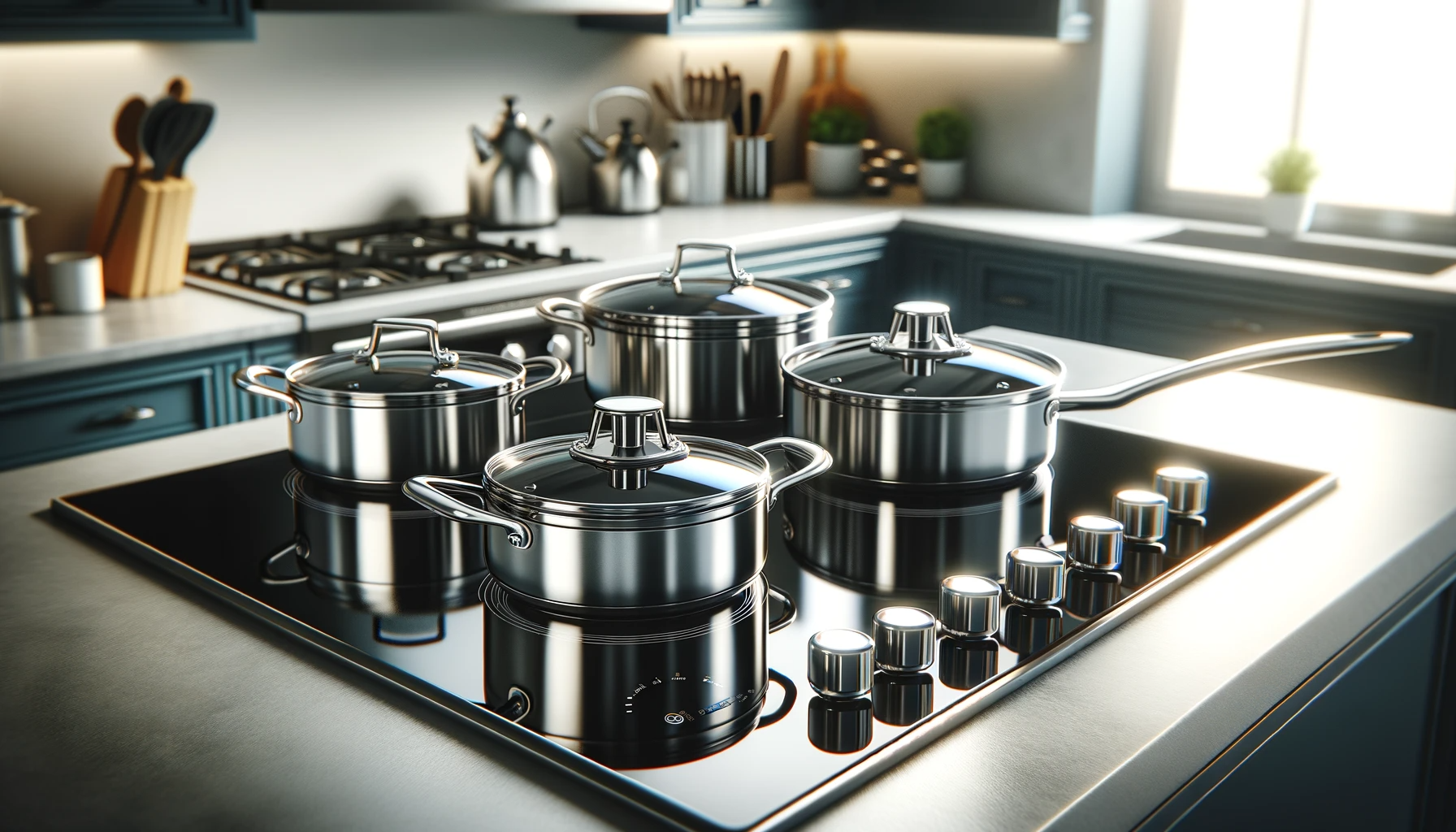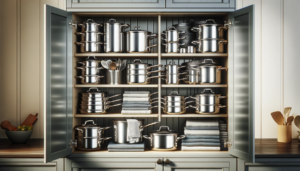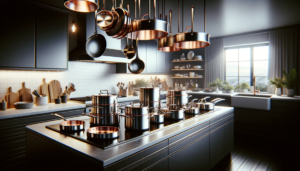Have you ever worried about ruining your sleek new glass top stove while cooking with stainless steel pots and pans? Many home cooks do.
Stainless steel and glass stove tops can make great partners when you choose the right cookware and care for the surface properly.
Let’s explore why stainless steel can work for glass cooktops and how to prevent damage when cooking…
Can You Use Stainless Steel Cookware on Glass Top Stoves?
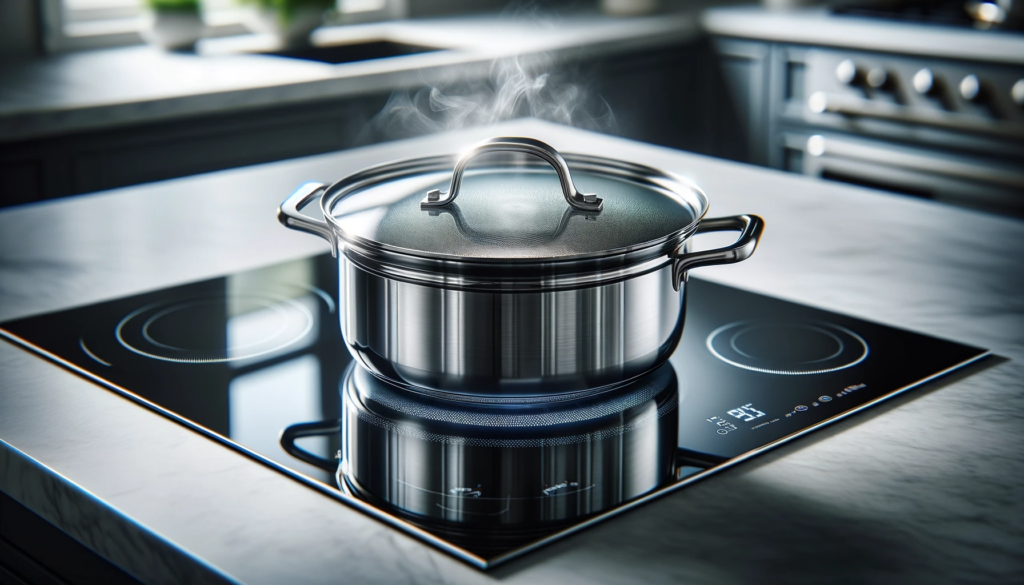
Yes, you can use stainless steel cookware on glass top stoves.
Stainless steel conducts heat evenly to stovetops for uniform cooking without hot spots or burning.
Just ensure the stainless steel pans have heavy, encapsulated bases to transmit heat well.
Avoid dragging the stainless steel across the stove’s glass surface to prevent scratching over time.
And promptly clean any spills, grease or food drippings to stop debris from permanently etching cooktop glass.
By using quality stainless cookware and properly caring for the smooth cooking surface, you can safely use stainless pans and pots on glass top ranges.
Stainless Steel Conducts Heat Well for Glass Tops
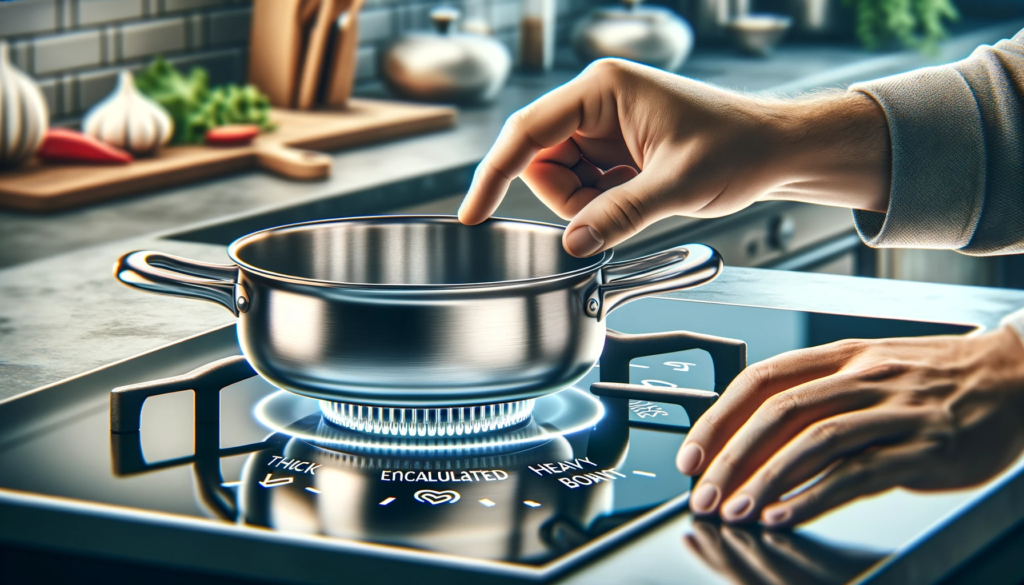
Stainless steel is often considered an ideal cookware material because of its strength, durability, and ease of cleaning.
Stainless steel has good thermal conductivity, meaning it can transmit heat evenly and efficiently.
This makes it suitable for smooth top electric and induction cooktops, including those made of glass-ceramic material.
The even and responsive heat conductivity of stainless steel prevents the development of hot spots when used on glass stove tops.
It also ensures food cooks uniformly in stainless steel pots and pans on glass cooktops without uneven heating or burning.
Stainless steel’s ability to distribute heat smoothly across its surface makes it an compatible choice for glass-ceramic range tops.
Stainless steel conducts heat nearly as efficiently as metals like aluminum and copper.
While not quite as conductive, stainless steel still transmits heat smoothly thanks to its metal composition and properties.
This means it can work well to cook food on glass-top electric ranges where responsiveness and evenness are desirable.
However, the base composition of the stainless steel cookware can impact its performance on glass stove tops.
Fully stainless steel bases may require some extra preheating time on a glass range before reaching optimal cooking temperature.
Stainless steel pans with a layer of aluminum or copper on the bottom will typically heat up and cool down faster, providing better initial responsiveness on glass ranges.
Check the Cookware Base
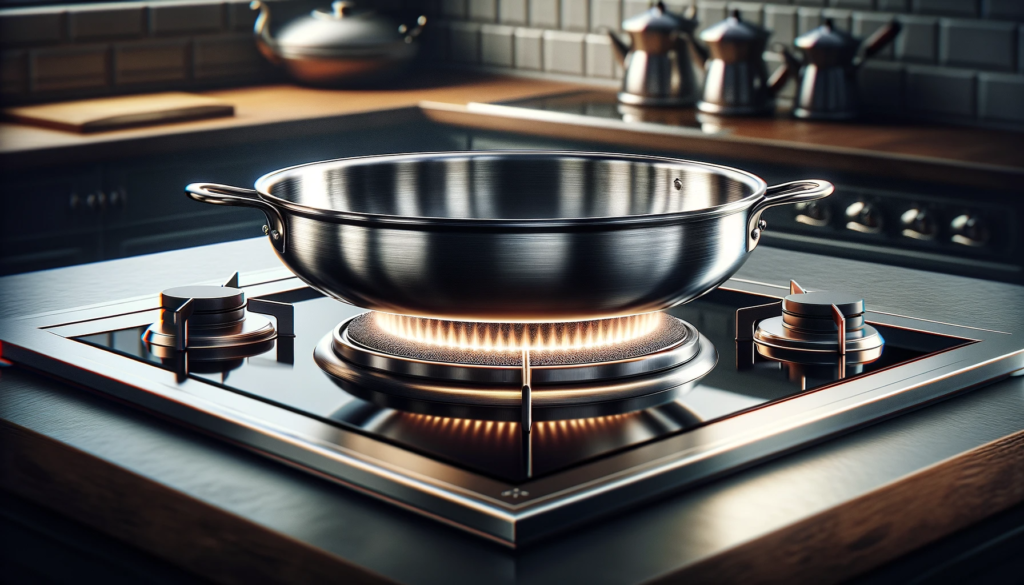
When selecting stainless steel pots and pans to use on a smooth glass-ceramic cooktop, you’ll want to consider the cookware’s base construction.
The base can be fully constructed of stainless steel or incorporate layers of other metals like aluminum, copper, or encapsulated iron to enhance conductivity.
Fully stainless steel bases can work well on glass stove tops, but they tend to have a longer preheat time before reaching cooking temperature.
The thicker the stainless steel making up the base, the more preheating is generally required.
But once fully warmed, stainless steel transfers heat evenly across a glass range surface.
If choosing stainless steel cookware with a fully stainless base for glass cooktop cooking, allow extra preheating time for it to get fully hot.
Use medium to medium-low heat settings to give the dense stainless steel time to fully warm up.
Doing so will prevent uneven cooking performance once ingredients are added.
Metal disc bases on stainless steel cookware also perform reliably on smooth glass-ceramic ranges.
The disc is made of highly conductive aluminum or copper that quickly and evenly distributes heat.
Metal disc bases offer responsiveness similar to pans fully clad in aluminum or stainless steel across their entire base.
Just check that the metal disc spans the entire base surface to prevent unevenness.
Go with Heavy Bottomed Pans
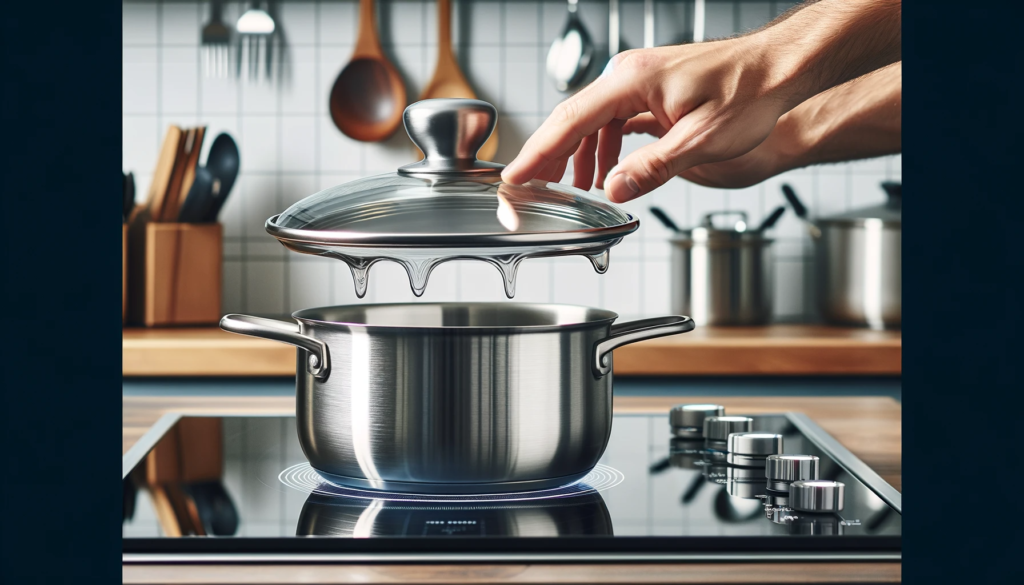
For cooking on glass stove tops, experts recommend choosing heavy bottomed stainless steel cookware over lightweight options.
Heavier stainless steel pans made of encapsulated material, with thicker gauges of metal making up the bottom, perform better for glass range cooking.
The heavier base holds heat efficiently once warm and conducts it smoothly across the pan’s entirety.
This prevents hot spots from developing while promoting good, even contact with the cooktop.
Compared to their lightweight counterparts, heavy bottomed stainless pans resist warping from high or intense stove top heat.
Thin pans can easily warp or twist from sustained high heat.
A warped pan base will no longer sit flush with the flat cooktop surface.
Gaps underneath can lead to uneven, inefficient heating and cooking.
Heavy bottoms maintain durability and shape for smooth glass range contact.
For best results when cooking on a glass-ceramic range with stainless steel, select cookware with thick, flat, and heavy encapsulated bottoms.
Encapsulated means a highly conductive layer of metal like aluminum or copper sandwiched between durable stainless exterior layers.
This offers both quick heat response and even heat distribution across the full bottom surface.
The thickness and flat base maintains stable all-over contact with the smooth glass cooktop.
Avoid Dragging and Dropping
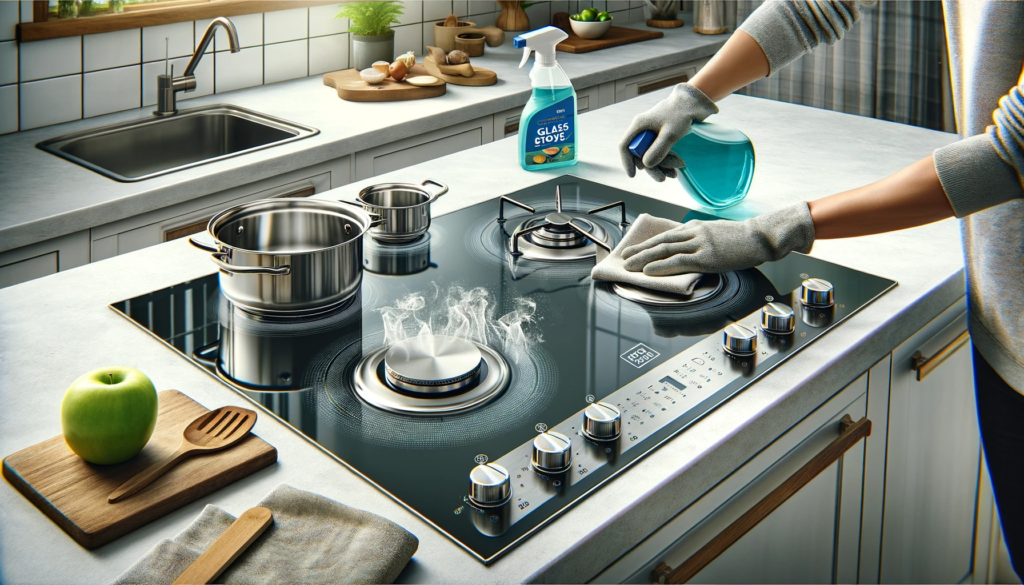
Glass-ceramic stove tops are designed for extreme durability and scratch resistance during daily cooking.
Still, the glass surface benefits from simple care when using metal cookware like stainless steel.
Dragging heavy pots and pans across the cooktop surface can still scratch and gradually degrade glass over time, diminishing its appearance.
For glass stove top protection when maneuvering larger stainless pieces across burners, lift cookware directly vertically before repositioning or removing.
Likewise, do not slam down or drop heavy pots onto the cooktop, even from a short height or distance.
This risks cracking or outright breaking the glass range surface.
Instead, carefully set stainless steel cookware onto the glass stove top using caution and control.
Using potholders for grip can prevent accidental sliding or falling from bare hands.
While durable, glass retains a level of delicacy around harsh metal impacts against its smooth uniform surface.
Avoiding dragging and slamming stainless on glass will help prevent unnecessary scratching, chipping, or outright cracks and breaks over years of daily cooking.
The glass can withstand great heat stress yet remains vulnerable to aggressive physical abrasion or blows from metal pans.
Careful placement protects the long term appearance and integrity of the sleek cooktop.
Clean the Cooktop
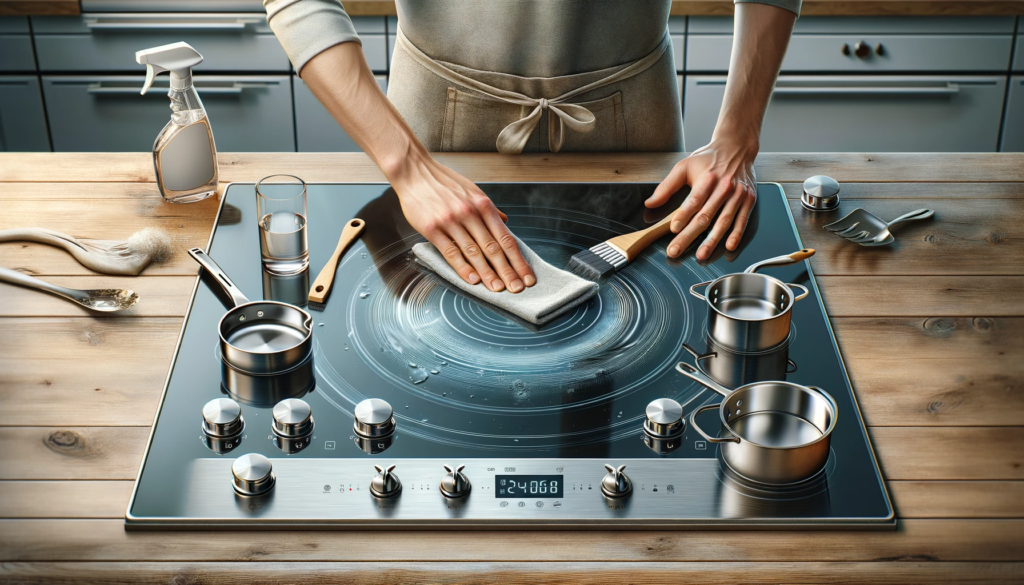
Part of protecting a glass-ceramic stovetop when cooking with stainless steel pans means cleaning regularly and thoroughly after use.
Food residue, grease drippings, sugary ingredients, and spilled liquids escaping from pots during cooking can adhere and cake on if left to sit.
Burnt and stuck on mess can permanently stain or etch marks into cooktop glass that cannot be removed or repaired.
To prevent staining or etching damage, wipe down the entire glass surface once cooled but still slightly warm after cooking stainless pans.
Use a single-edged razor to remove the heaviest debris if necessary.
Then apply a specialized glass-ceramic cleaner with a paper towel or lint-free cloth, buffing in circles to restore shine.
Avoid using abrasive scrubbing devices on the delicate surface.
For extra stuck-on grime, pure vinegar can help dissolve residues before glass cleaner application.
Check your range’s manual for manufacturer cleaning recommendations too – some glass materials have unique cleaning needs.
But for most glass-ceramic tops, prompt post-cook wiping and cleaning prevents permanent ghosting or etching damage from cooking mess and debris.
Conclusion
In conclusion, stainless steel cookware can generally be used on glass top stoves with proper care and handling.
Ensure cookware has an encapsulated or disc base to prevent hot spots and warping.
Lift and place pots and pans gently to prevent scratching or cracking the stove’s glass surface.
And promptly clean after cooking to stop debris from permanently etching the cooktop.
By selecting quality stainless steel cookware and caring for the smooth glass surface, home chefs can safely prepare delicious meals for years to come.
